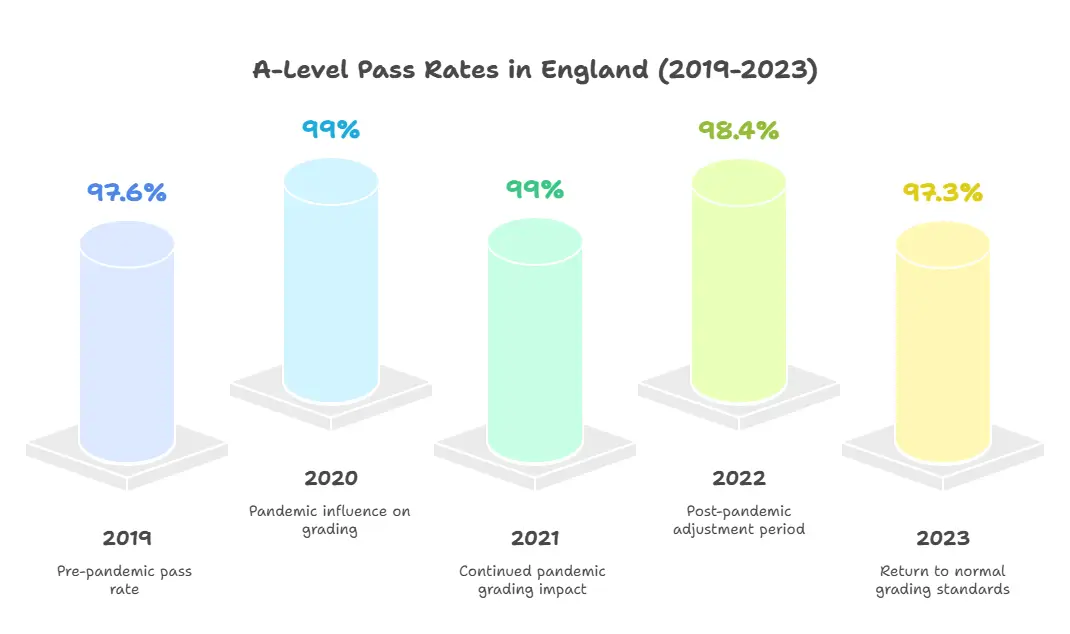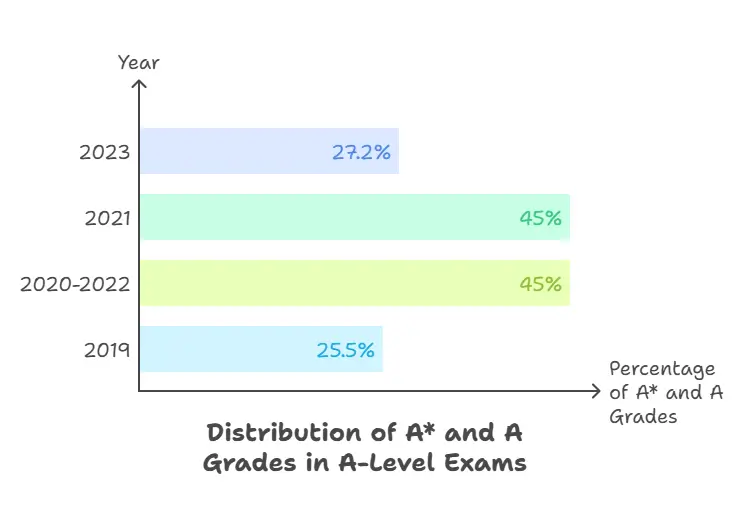A-Level Pass Rates in England
A-Level Pass Rates in England (2019-2023): Trends, Statistics & COVID-19 Impact
How Have A-Level Results Changed Before and After the Pandemic?
The English education system has experienced significant fluctuations in A-Level results over recent years, largely influenced by the unprecedented disruption caused by COVID-19. This analysis examines the statistical trends, comparing pre-pandemic baselines with the dramatic shifts observed during and after this educational upheaval.
Overall A-Level Pass Rates Remained Consistently High.
Despite challenging circumstances, A-Level pass rates (grades A*-E) in England have maintained remarkable stability:

Top Grades Distribution Shows Dramatic Pandemic Effect
The proportion of students achieving top grades (A* and A) reveals the most striking pandemic-related changes:

The Pandemic's Legacy on A-Level Assessment
The COVID-19 pandemic created unprecedented challenges for A-Level assessment, resulting in:
- A substantial increase in top grades during 2020-2022
- A gradual return to pre-pandemic standards by 2023
- Ongoing debates about fair assessment methodologies
What This Means for Students and Universities
The fluctuations in A-Level results have significant implications:
- Universities faced increased competition for places during peak grade inflation years
- Students from pandemic cohorts experienced different assessment conditions
- Employers and higher education institutions must contextualize grades from different years
Looking Forward: Stabilisation and Reform
As England's education system emerges from pandemic disruption, monitoring these trends becomes essential for understanding:
- Long-term impacts on educational standards
- Effectiveness of assessment reforms
- Equity considerations across different student cohorts
This data demonstrates both the resilience of England's education system and the profound impact of external disruptions on traditional assessment models.